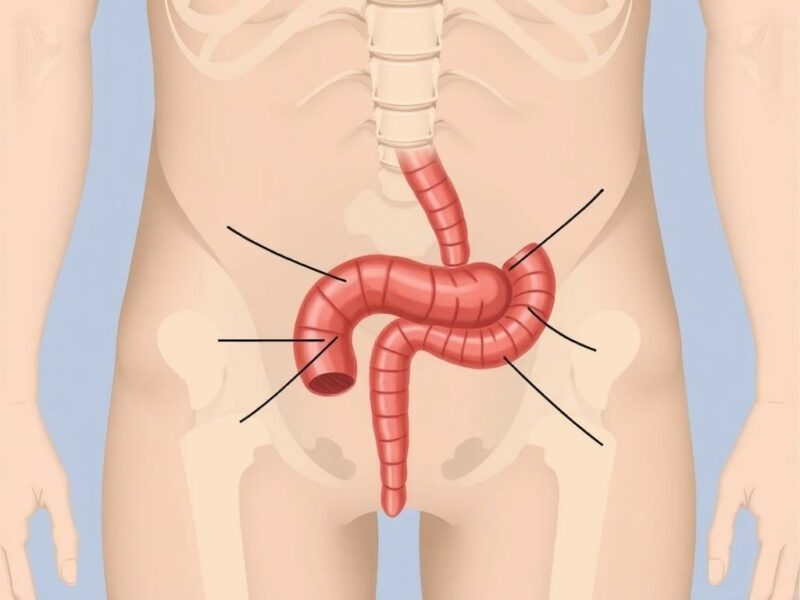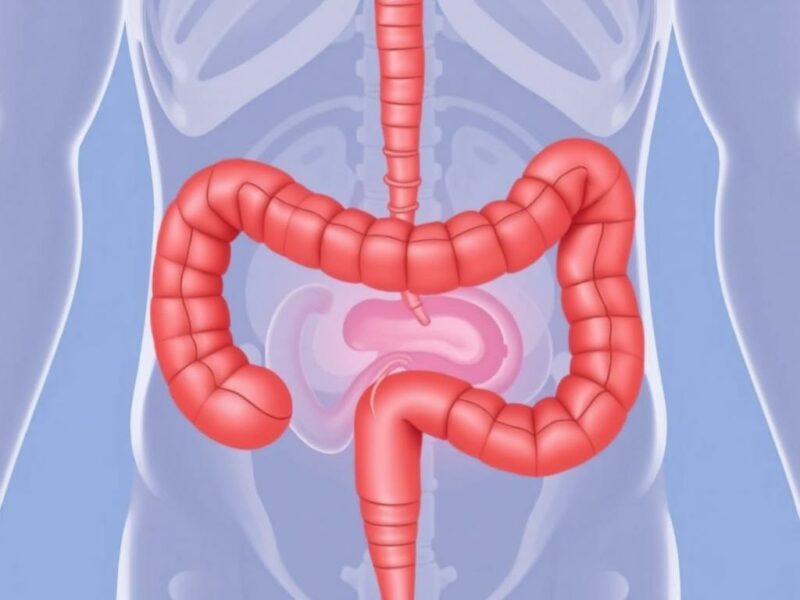What Is McBurney’s Point?

When you experience sudden, sharp abdominal pain, especially in the lower right side, one of the most important clues for doctors is something called McBurney’s Point. You might wonder, what exactly is McBurney’s Point? Simply put, it’s a specific spot located one-third of the way along a line drawn from the front of your hip bone (anterior superior iliac spine) to your belly button (umbilicus). Named after Charles McBurney, an American surgeon who first described it in the late 19th century, this point has become a vital landmark in the clinical assessment of appendicitis.
What makes McBurney’s Point so special? It’s believed to lie directly over the base of the appendix, an organ that, while once considered vestigial, has become infamous because it can cause one of the most common surgical emergencies: appendicitis. When inflammation or infection strikes the appendix, the discomfort usually starts near the belly button but soon localizes to McBurney’s Point, providing a telltale sign for both patients and healthcare providers. Understanding this point isn’t just academic; it literally helps save lives by guiding prompt diagnosis and treatment.
The Anatomy Behind McBurney’s Point
To appreciate the significance of McBurney’s Point, it’s helpful to have a basic grasp of the anatomy involved in appendicitis. The appendix is a small, finger-like tube attached to the cecum, a portion of the large intestine. Its exact function remains a subject of debate, but its position near the junction between the small and large intestines is consistent among people.
The location of McBurney’s Point is a practical, surface-level reference meant to approximate the internal position of the base of the appendix. It’s located on the right lower abdomen, and its precise identification is crucial for doctors during physical exams. When a patient is experiencing appendicitis, tenderness upon palpation at McBurney’s Point is often a significant clinical finding.
How to Locate McBurney’s Point
If you want to visualize it yourself, imagine drawing a straight line from your belly button to the front point of your hip bone (located at the iliac crest). Now, divide that line into three equal parts. McBurney’s Point lies at the junction between the outer one-third and the inner two-thirds of this line – closer to your hip bone than your belly button.
- Find your umbilicus (belly button).
- Find your right anterior superior iliac spine (the bony prominence on your hip).
- Draw an imaginary line connecting these two points.
- Locate the point one-third of the way along this line from the hip bone toward the belly button.
This spot, when tender or painful, signals irritation or inflammation of the appendix beneath it, especially in classic cases of appendicitis.
Appendicitis: What Is It and Why Does It Matter?
Appendicitis is the inflammation of the appendix, usually caused by blockage or infection. It’s a fairly common condition and one of the leading causes for emergency abdominal surgery worldwide. If untreated, the inflamed appendix can rupture, leading to a serious—and potentially life-threatening—infection called peritonitis.
The symptoms of appendicitis can vary but often follow a recognizable pattern that involves McBurney’s Point. Patients typically experience:
- Initial dull pain near the belly button
- Gradual movement of pain toward the right lower abdomen (McBurney’s Point)
- Tenderness and increased pain upon applying pressure at McBurney’s Point
- Nausea, vomiting, and loss of appetite
- Fever and chills in later stages
Prompt diagnosis is critical. Because the appendix can rupture within 24 to 48 hours of symptom onset, knowing how to interpret signs around McBurney’s Point can help patients seek urgent medical care.
The Role of McBurney’s Point in Diagnosing Appendicitis
When a patient visits a healthcare provider with abdominal pain, the doctor will often perform a physical examination targeting McBurney’s Point. The physician will gently press on the area and look for “tenderness” or “rebound tenderness” (pain upon releasing pressure), which strongly suggests appendiceal inflammation.
Other diagnostic tests—like blood work, ultrasound, or CT scans—are often used to confirm appendicitis. However, McBurney’s Point tenderness remains a cornerstone of the clinical examination and a sign that guides further evaluation.
Signs and Symptoms Related to McBurney’s Point
Several specific findings related to palpation over McBurney’s Point can help differentiate appendicitis from other causes of abdominal pain. Here are some of the important physical signs that doctors assess:
| Sign | Description | Relevance to Appendicitis |
|---|---|---|
| McBurney’s Tenderness | Pain elicited directly over McBurney’s Point when pressed. | Strongly suggests inflamed appendix. |
| Rebound Tenderness | Pain that increases when pressure is suddenly released from McBurney’s Point. | Indicates peritoneal irritation, likely from appendicitis. |
| Guarding | Involuntary muscle contraction to protect inflamed tissues under McBurney’s Point. | Signals localized inflammation. |
| Rovsing’s Sign | Pain at McBurney’s Point with palpation of the left lower abdomen. | Suggests appendiceal irritation. |
These signs, especially when combined with clinical history and lab results, are fundamental to diagnosing appendicitis quickly and accurately.
Other Diagnostic Maneuvers Connected to McBurney’s Point
In addition to direct examination, healthcare providers might use other specific tests to provoke or identify pain around McBurney’s Point:
- Psoas Sign: Pain produced by extending the right thigh, indicating irritation of the iliopsoas muscle near the appendix.
- Obturator Sign: Pain on internal rotation of the flexed right hip, suggesting pelvic appendix involvement.
- Rovsing’s Sign: As noted above, palpation of the left lower abdomen causing right lower quadrant pain.
While not always present, these signs support suspicion of appendicitis, especially when McBurney’s Point tenderness is evident.
Treatment Approaches Once McBurney’s Point Tenderness Is Confirmed
Once a diagnosis of appendicitis is suspected based on McBurney’s Point tenderness and supportive findings, treatment typically involves surgical removal of the appendix, known as an appendectomy. This procedure prevents rupture and complications. Today, appendectomies are often performed laparoscopically, allowing for smaller incisions and faster recovery.
However, some cases of uncomplicated appendicitis might be treated with antibiotics alone, though this approach remains somewhat controversial and is decided on a case-by-case basis.
Why Early Diagnosis Is Critical
The key benefit of identifying tenderness at McBurney’s Point early is preventing the most dangerous complications of appendicitis, especially rupture. A ruptured appendix can spill infectious material into the abdominal cavity, leading to peritonitis, abscess formation, sepsis, and even death if untreated.
Patients experiencing severe abdominal pain should never ignore symptoms, especially if pain localizes to the lower right side. Consulting a healthcare professional promptly can lead to timely intervention.
Common Questions About McBurney’s Point and Appendicitis
Here are some frequently asked questions that often arise when discussing this important clinical landmark and condition:
| Question | Answer |
|---|---|
| Is pain at McBurney’s Point always appendicitis? | No, while tenderness is a key sign, other conditions like ovarian cysts, kidney stones, or gastrointestinal infections can cause pain in this area. |
| Can children have McBurney’s Point tenderness? | Yes, McBurney’s Point is a useful landmark in both adults and children, although pediatric diagnosis can be more challenging. |
| Is McBurney’s Point always present where the appendix lies? | The appendix position can vary; sometimes it’s not perfectly aligned with McBurney’s Point, which can complicate diagnosis. |
| What happens if McBurney’s Point tenderness is absent? | Absence doesn’t rule out appendicitis, especially early in the disease. Other symptoms and imaging may be needed. |
Summary of Key Points

For a clearer overview, here’s a quick summary of the central ideas surrounding McBurney’s Point and appendicitis:
- McBurney’s Point is a surface anatomical landmark used to approximate the appendix’s location.
- It lies one-third the distance from the right anterior superior iliac spine to the umbilicus.
- Tenderness at McBurney’s Point strongly suggests appendicitis but isn’t 100% specific.
- Physical signs like rebound tenderness and guarding enhance diagnostic accuracy.
- Other signs (Rovsing’s, psoas, obturator) complement the assessment.
- Early diagnosis and treatment prevent dangerous complications like rupture.
Conclusion
McBurney’s Point remains one of the most valuable clinical tools in diagnosing appendicitis, a condition that demands timely intervention to avoid serious consequences. Its simplicity as a landmark combined with the recognizable pattern of pain that centers there helps doctors differentiate appendicitis from other abdominal problems. While not infallible, tenderness at McBurney’s Point, alongside supportive signs and diagnostic tests, directs swift surgical management that saves lives. Whether you’re a medical professional honing your clinical skills or just curious about how doctors pinpoint that sharp right lower abdominal pain, understanding McBurney’s Point illuminates the remarkable link between surface anatomy and internal illness. Next time you hear about appendicitis or abdominal pain, remember how this small yet crucial point on your body plays a big role in healthcare worldwide.



